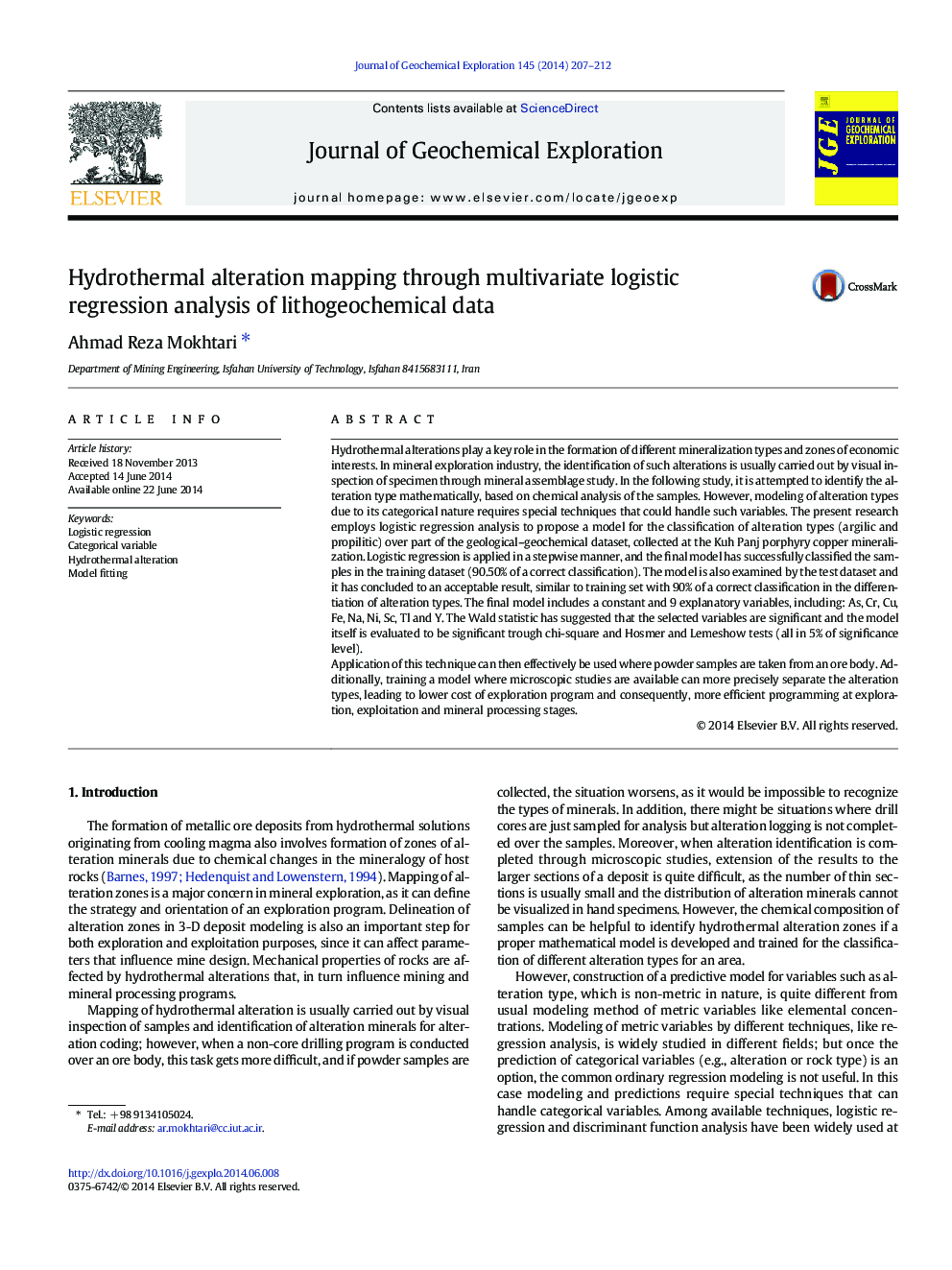| Article ID | Journal | Published Year | Pages | File Type |
|---|---|---|---|---|
| 6344673 | Journal of Geochemical Exploration | 2014 | 6 Pages |
â¢Logistic regression has been used for the prediction of hydrothermal alteration type.â¢Elemental contents of lithogeochemical samples are used as explanatory variables.â¢The final statistical model has successfully differentiated the type of alteration.
Hydrothermal alterations play a key role in the formation of different mineralization types and zones of economic interests. In mineral exploration industry, the identification of such alterations is usually carried out by visual inspection of specimen through mineral assemblage study. In the following study, it is attempted to identify the alteration type mathematically, based on chemical analysis of the samples. However, modeling of alteration types due to its categorical nature requires special techniques that could handle such variables. The present research employs logistic regression analysis to propose a model for the classification of alteration types (argilic and propilitic) over part of the geological-geochemical dataset, collected at the Kuh Panj porphyry copper mineralization. Logistic regression is applied in a stepwise manner, and the final model has successfully classified the samples in the training dataset (90.50% of a correct classification). The model is also examined by the test dataset and it has concluded to an acceptable result, similar to training set with 90% of a correct classification in the differentiation of alteration types. The final model includes a constant and 9 explanatory variables, including: As, Cr, Cu, Fe, Na, Ni, Sc, Tl and Y. The Wald statistic has suggested that the selected variables are significant and the model itself is evaluated to be significant trough chi-square and Hosmer and Lemeshow tests (all in 5% of significance level).Application of this technique can then effectively be used where powder samples are taken from an ore body. Additionally, training a model where microscopic studies are available can more precisely separate the alteration types, leading to lower cost of exploration program and consequently, more efficient programming at exploration, exploitation and mineral processing stages.
